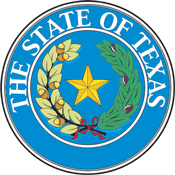Climate Change Adaptation - Texas

Climate Change History
Texas has no formal climate change adaptation planning effort underway. The State has been experiencing and anticipates further costal upland subsidence and coastal wetlands loss as a result of continuing sea level rise. Additionally, the State has enacted a number of energy-efficiency standards which do indirectly fall into the category of greenhouse gas mitigation activities. Texas has also been experiencing warmer winters, which is resulting in the northward range expansion of several sub-tropical species of fish such as the gray snapper, snook, and plants such as the black mangrove.
Current & Future Action
Agencies within the State are engaged in some adaptation efforts, and many more efforts which will have adaptation effects and are considering Texas’ changing climatic situation as they go. Wetland restoration projects in Texas are trying to incorporate higher elevation habitats as well, to allow for inland migration of the targeted areas. Some projects are being linked to upland conservation projects for the same reasons.
Pilot Programs/Current Studies
The state does not, as yet, have any specific pilots or case studies dealing with wetlands and climate change.
For More Information
The northward expansion of Gray Snapper is covered in an article by James M. Tolan and Mark Fisher available from: http://fishbull.noaa.gov/1071/1071toc.htm
